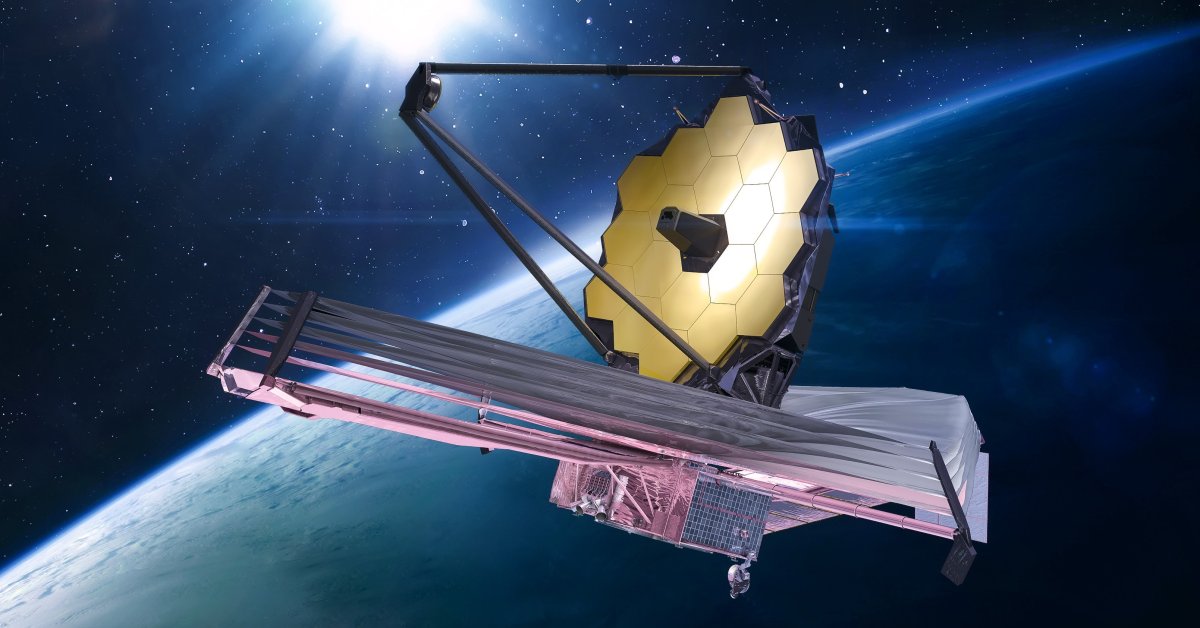NASA’s James Webb Space Telescope continues to deliver the goods. Launched on Christmas Day, 2021, it has since sent back a storm of dazzling images and a trove of good science. Now Webb has done it again. As NASA reports, two astronomers working with raw Webb data the space agency periodically makes available to researchers, have found evidence of a fast-growing black hole in an unexpected place and formed in an unexpected way.
What the two astronomers—Pieter van Dokkumum of Yale University and Gabriel Brammer of the University of Copenhagen—found was a pair of spiral galaxies that collided in space. Each galaxy has a black hole at its center that was already present before the collision and which emit a red glow surrounded by a ring of light and matter, giving the overall formation the shape of the infinity symbol. Van Dokkum and Brammer nicknamed the pair the Infinity Galaxy.
What surprised them was that the formation was also home to a third, larger, supermassive black hole—one with the mass of perhaps one million suns. This black hole was not in the center of one or the other galaxy as a supermassive black hole should be, but rather in the mashup of dust and gasses between them. “Everything is unusual about this galaxy,” said Van Dokkum, in an extensive description he wrote for NASA. “Not only does it look strange, but it also has this supermassive black hole that’s pulling a lot of material in.”
Just how the object formed is unknown, but Van Dokkum and Brammer have two theories, called the “light seeds” and “heavy seeds” scenarios. In the light seeds version, a star explodes and its core collapses, forming a black hole with a mass of perhaps 1,000 suns. Over time, other nearby stars collapse and form their own black holes and finally all of the bodies merge to form one supermassive black hole. But that theory has a problem. “The merger process takes time,” Van Dokkum says, “and Webb has found incredibly massive black holes at incredibly early times in the universe—possibly even too early for the process to explain them.” That doesn’t mean the light seeds scenario doesn’t ever play out, but it does mean that it’s not as common as astronomers may believe.
In the heavy seeds scenario a supermassive black hole forms directly from the collapse of a large gas cloud. In the case of the Infinity Galaxy, this occurred during the collision, when the galactic gas was shocked and compressed by the violence of the cosmic crackup. “This compression might just be enough to form a dense knot, which then compressed into a black hole,” Van Dokkum says. That process is also called a direct collapse black hole. Not only did a supermassive black hole form from this collision, that black hole is still growing. Radio and X-ray emissions confirmed by NASA’s Chandra X-ray Observatory and by the ground-based Very Large Array, confirm that the black hole is still pulling in prodigious amounts of dust and gas from its surroundings.
Van Dokkum and Brammer prefer the heavy seeds scenario to explain what they found since it would be such a natural result of a galactic collision. “By looking at the Infinity Galaxy, we think we have pieced together a story of how this could have happened here,” says Van Dokkum. But they concede that other, less likely occurrences could explain the supermassive black hole.
For one thing, the body between the two galaxies in the Infinity Galaxy might be a runaway black hole that was ejected from its parent galaxy and is now passing through the Infinity Galaxy, and just happened to have been spotted by the Webb telescope during this relatively brief interregnum. Alternatively, the supermassive black hole might be at the center of a third galaxy that happens to be in the foreground of the same area of sky as the Infinity Galaxy. If that third galaxy were a dwarf galaxy, it might be faint enough that only the superheated gas and dust surrounding the black hole would be visible. But the researchers don’t expect those theories to be borne out. If the black hole were a runaway, the velocity of the gasses flowing into it would likely be different from the velocity of the gasses in the Infinity Galaxy. While they haven’t yet measured the speed of the gasses, they expect them to be similar. The idea that the black hole lies at the center of a dwarf galaxy can be dismissed almost out of hand since dwarf galaxies typically don’t form black holes that big. All that is enough for the astronomers to claim at least a cautious victory in their discovery.
“We can’t say definitively that we have found a direct collapse black hole,” says Van Dokkum. “But we can say that these new data strengthen the case that we’re seeing a newborn black hole while eliminating some of the competing explanations.”








